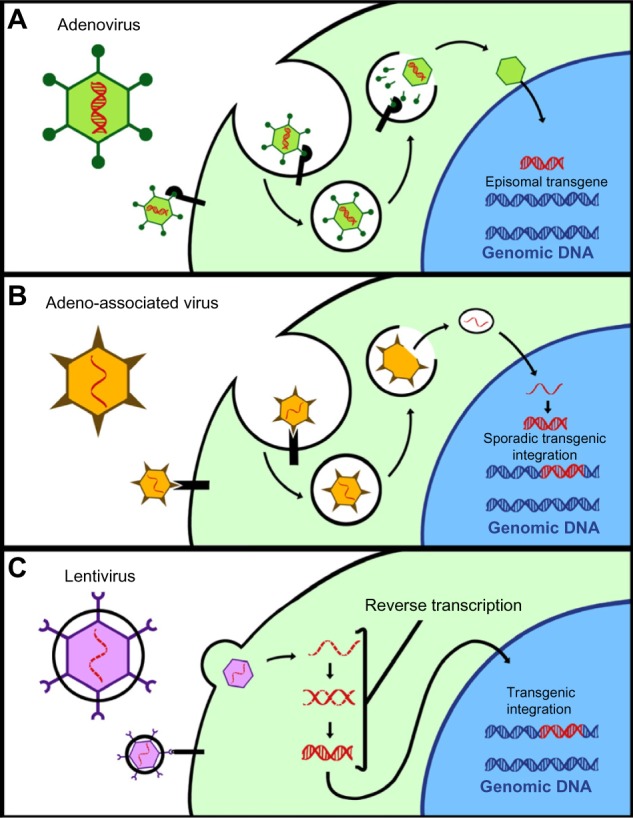Figure 2.

Commonly used viral vectors.
Notes: (A) Adenovirus is a nonenveloped double-stranded DNA virus. It enters the cell by binding adenovirus receptors (black bar) such as the coxsackievirus and adenovirus receptor and translocates its genome into the nuclease of the cell. Viral DNA (red helix) does not integrate into the host genome and persists as an episome. (B) Adeno-associated virus is a nonenveloped single-stranded DNA virus. It enters the cell using a variety of receptors, which vary by serotype (represented by the black bar). Inside the cell, it translocates its genome (red helix) into the nucleus where it is made into double-stranded DNA. This DNA may persist as an episome or sporadically be integrated into the host genome (blue helix). (C) Lentivirus (purple hexagon) is an enveloped single-stranded RNA virus. It enters the cell using a variety of receptors, which are different for each virus (represented by the black bar). Within the cell, it reverse transcribes its genome. The single strand of viral RNA (dashed red line) is made into a double-stranded DNA (red helix) before entering the nucleus. Retroviral DNA enters the nucleus during mitosis, while lentiviral DNA can enter the nucleus of nondividing cells via nuclear pores. Within the nuclease, the DNA integrates into the host genome (blue helix) at a random site.
